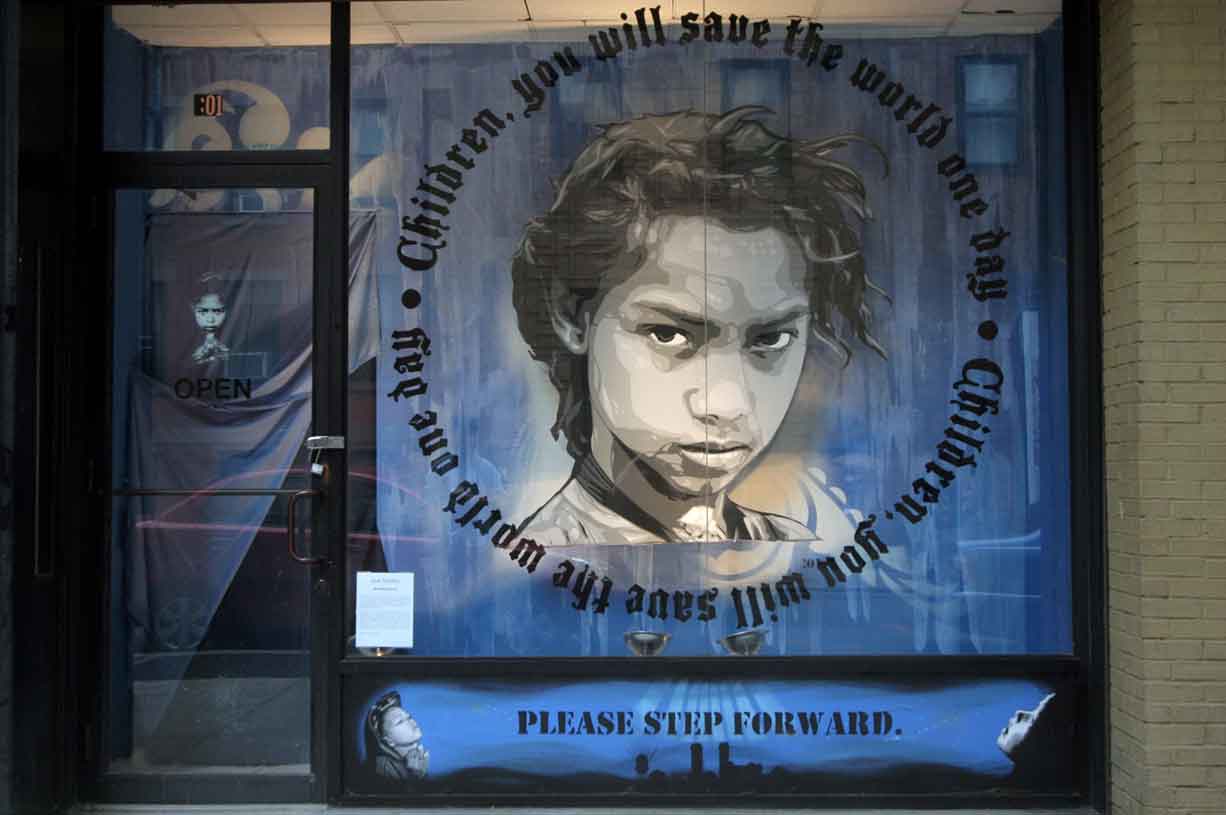Over the past few years, Garrison Buxton and his wife Alison have been quietly building a mini independent-art empire. Since 2005, the co-founder of Peripheral Media Projects and Ad Hoc Art Gallery has brought lowbrow art, street culture, and social activism to the Brooklyn masses through his gallery space, design studio, and community art collaborations.
“Peripheral Media started as a mechanism for continuing on our design and production, a growth step as far as people being creative and figuring out a way to translate that creative energy and what we were doing for fun into our livelihood,” Buxton says. “So Peripheral Media is a company that was started to be a design-production collaboration and think tank.”
The formation of the Ad Hoc Art Gallery stemmed from Buxton sensing a need to inject a sense of social responsibility and community activism into New York’s art scene. He felt that this element was often lacking from many of the city’s mainstream galleries.
“[Ad Hoc] grew out of the larger frustration of not really enjoying the majority of the gallery experience going on in the contemporary modern art world – going out to galleries and seeing a lot of stuff that really didn’t seem to have a lot of passion and good energy in it,” he says. “It was art for art’s sake but not for some more profound or valiant meaning.”
With Ad Hoc, Buxton wanted to focus on the genres of art that were often sidelined or completely overlooked by the contemporary art establishment. The space champions community-oriented artists and embraces everything from graffiti art to tattoo culture to printmaking.
“For us, what we really like is people that are really active and motivated in creating their own artwork but also in their human experience,” he says. “The majority of people that we show are very motivated in creating their own stuff but also are involved towards larger social causes.”

Ad Hoc / Peripheral Media Projects have been making an impact in the community lately via the Willoughby Windows Project. The Willoughby Windows Project was commissioned by Brooklyn’s Metro Tech BID and allowed artists to create installations for 12 storefronts that have shut down. The project is expected to be on display through the rest of the year.
“It’s basically indefinite because this project is a block where the businesses were moved out in preparation for the demolition and rebuilding of this area,” Buxton says, “and that’s been in a holding pattern because of the economy.”
This summer, Ad Hoc will also be the design force behind the 25th annual SummerStage series, which is running through September 21. “We have a mini gallery, store, and print studio in the middle of one of the best global art-performance projects going,” Buxton says. “We are screen printing live on the spot, allowing people to customize their visual experience.”
A major Ad Hoc / Peripheral Media Projects expansion also is in the works. Buxton currently is creating a Vermont outpost, and the farm that he’s chosen couldn’t be more appropriate.
The homestead that he is refurbishing has been in his family since the 1800s, but from 1940 to 1980, groundbreaking printmaker Harry Shokler lived on the property. Shokler was a central figure in the mid-century silk-screening movement and penned the definitive Artist’s Manual for Silk Screen Print Making.
“When we found that out, it was just too crazy,” Buxton says. “We have this old family place that we want to look at fixing up, and when we do that, we find out that the man that lived there pioneered the industry that we are involved in, and it is a tremendous part of the work that we do.”
Buxton’s father brought the property back into the family, and Buxton hopes to create a haven that will pay homage to Shokler’s legacy while still remaining progressive.
“Ultimately, what we want to do is create a historical reference to this location,” he says. “We want it to be a place where artists can come in and do residencies. We want people to be able to come out of the city, or wherever they come from, and have a little nugget of space where they can create.”

